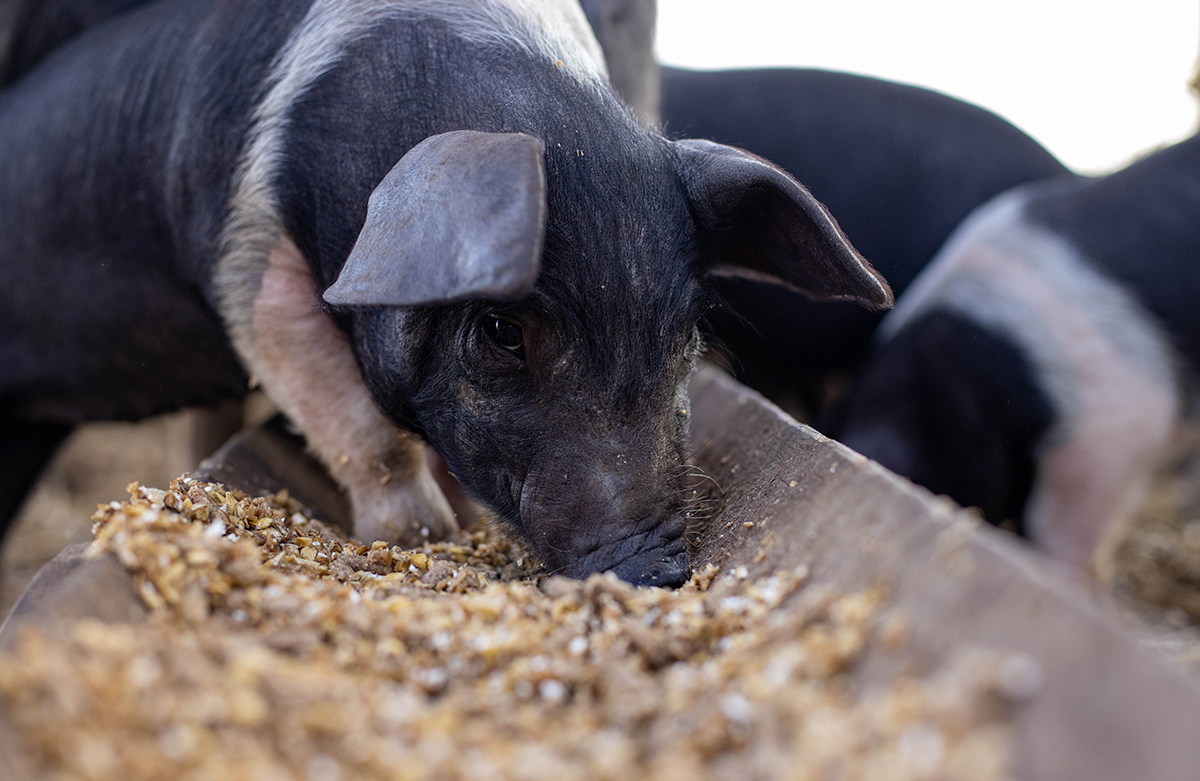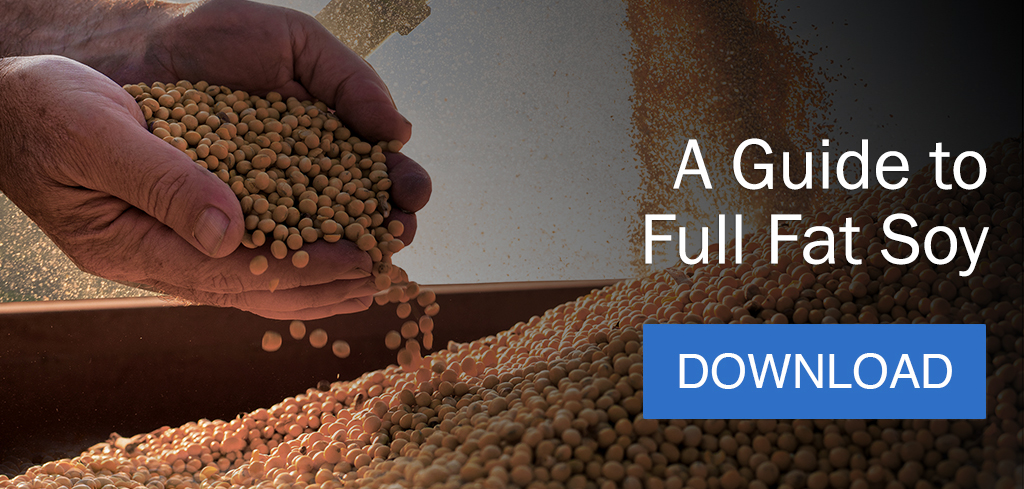
Traditionally, the oilseed processing industry has focused on extracting oil from soybeans for human consumption, then feeding the remaining meal to livestock as a valuable source of protein. High-energy diets often require fat to be added back into the meal to meet the complete nutritional needs of certain animals. But another alternative is gaining popularity: keeping the oil inside the bean using minimal processing to produce full fat soy instead of separating and recombining the ingredients.
Not only does this approach avoid the cost of extraction and the redundant expense of adding fat back into feed formulations, but it also provides a nutritious source of both protein and energy in one highly palatable ingredient. Because of these benefits, the full fat soybean market is projected to reach nearly $150 billion by 2031, with a compound annual growth rate of nearly 12%.
By understanding how full fat soy is produced, processors can tap into the many benefits of this alternative to defatted meal.
The key to soybean processing
As the primary protein source in most animal feed formulations, soybeans are highly valued for their unique amino acid profile. Unfortunately, as nutritious as soybeans can be, they also contain several anti-nutritional factors that can compromise their health benefits.
Specifically, raw soybeans contain an enzyme called trypsin inhibitor that interrupts the activity of trypsin, an important digestive enzyme that helps monogastric (single-stomached) animals absorb protein. Over time, excessive consumption of trypsin inhibitors can cause intestinal damage and disease, which can be detrimental to animal performance and overall health.
Trypsin inhibitors must be deactivated to make soybeans safe for consumption. Whether soybeans undergo chemical or mechanical extraction or other processing to produce full fat soy, heat treatment is a critical component of preparing soy products for market.
Heat treatment demands a delicate balance of time and temperature to effectively destroy harmful enzymes without damaging the beans. Excessive heat can degrade the protein’s quality, reduce the amino acids’ digestibility, and make oil more susceptible to oxidation. Proper processing, however, can deactivate trypsin inhibitors while improving digestibility.
Also read: Capitalizing on Opportunities in the Organic Soybean Meal Market
Processing options for full fat soy
Different processing methods apply various heat sources, at certain temperatures and exposure times, to deactivate trypsin inhibitors in full fat soy. For example:
- Roasting is the simplest and lowest cost way to produce full fat soy by cooking soybeans in a heating vessel at temperatures up to 200 degrees Celsius. Some processors grind the soybeans after roasting to produce ground or pelleted feed for poultry, while others feed whole roasted soybeans directly to larger livestock like cattle or swine.
- Wet extrusion systems cook soybeans quickly at lower temperatures, around 110 to 125 degrees Celsius, by injecting steam and elevating the pressure to accelerate the cooking process.
- Dry extrusion systems rely on frictional heat to cook soybeans at temperatures around 140 to 160 degrees Celsius without adding moisture. Although this is the most expensive option for processing full fat soy, the high-shear action inside the extruder effectively breaks down the seeds, releasing more oil to increase the availability of fat.
To learn more about the advantages of each processing system and how to select the best method, download Anderson’s Guide to Full Fat Soy.
The benefits of full fat soy
By subjecting soybeans to heat treatment to retain their natural oil while deactivating harmful enzymes, full fat soy processing unlocks several benefits for both processors and farmers — and, of course, for the animals consuming it. These benefits include:
- Energy boost: Soybeans contain up to 20% oil by weight, supplying a valuable source of energy that allows animals to consume more calories without eating more feed. This is particularly beneficial for the growth and performance of animals that require high-energy diets, such as broiler chickens, lactating cows, and lactating sows.
- By-pass protein: Ruminants that require undegraded intake protein (UIP or by-pass protein), such as lactating dairy cows, benefit from full fat soy, even though they can handle the trypsin inhibitors in raw beans. Roasted soybeans contain by-pass protein levels of 45 to 55%, compared to only 25 to 30% in raw beans. This replaces less palatable and more expensive protein sources, such as meat meal or blood meal, while boosting milk production.
- Binding power: The high oil content of full fat soy helps reduce dust levels in ground feed rations, replacing other high-energy binders like palm and coconut oil that tend to be more expensive and stricken by supply chain challenges.
- Palatable and digestible: Even animals that don’t require high-energy diets can benefit from adding full fat soy because it enhances feed efficiency due to improved palatability and digestible energy compared to defatted soybean meal or raw beans.
- Longer shelf-life: The combination of fat and protein extends the shelf-life and stability of full fat soy, enhancing its resistance to oxidation and rancidity compared to separately stored fat and oil components.
- Cost savings: By preserving the oil within the soybean instead of separating it, full fat soy avoids the cost of extraction and the expense of mixing liquid oil back into dry feed formulations. This is especially beneficial for facilities not equipped with sprayers or storage tanks to handle liquid feed components.
Full fat soy offers many attributes that make it not only a suitable alternative to defatted soybean meal but, in some cases, the preferred option.
Although Anderson International is widely known for its oil extraction expertise, its industry-leading extrusion equipment is perfectly positioned to serve full fat soy processors. With more than 135 years of oilseed processing experience, Anderson is committed to helping processors produce the highest quality products, without the additional costs of extraction.
